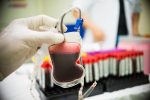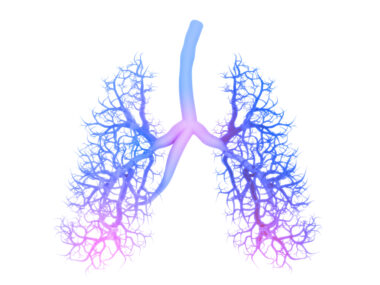Letairis may help prevent PAH in scleroderma patients: Trial data
Updates shared at 2024 EULAR Congress may help 'better manage' SSc care
Written by |

Treatment with Letairis (ambrisentan) — approved to treat pulmonary arterial hypertension (PAH), a common complication of systemic sclerosis (SSc) — may help prevent the development of PAH, or high blood pressure in the arteries of the lungs, in people with SSc.
That’s according to new data from SSc patients who completed the Phase 2 EDITA clinical trial (NCT02290613), which tested Letairis against a placebo, and who then continued their assigned regimen over a longer period.
These results, along with positive data from the Phase 2 AST-MOMA trial (NCT01895244) — which evaluated a reduced-toxicity regimen of stem cell transplant in SSc patients — were presented at the 2024 European Alliance of Associations for Rheumatology (EULAR) Congress, held earlier this month in Vienna.
“Taken together, these new findings could have an important bearing on the current standard of care for patients with SSc,” the alliance stated in a press release.
Overall, EULAR stated that “new, strong evidence is now available to help better manage patients with this life-threatening condition,” noting, however, that “gaps remain.”
Early treatment with Letairis may help impede PAH development, per data
SSc, also known as scleroderma, is characterized by the accumulation of scar tissue and damage to the skin and sometimes internal organs, including the lungs. A common complication of SSc, PAH is characterized by abnormally high blood pressure in the vessels that supply the lungs, which puts abnormal strain on the heart.
Letairis is an approved treatment for PAH, though there’s not much data on its use in SSc patients specifically.
The EDITA trial, conducted at a single center in Heidelberg, Germany, evaluated whether early treatment with Letairis was superior to a placebo at preventing worsening of mildly elevated mean pulmonary arterial pressure (mPAP) in SSc. mPAP is a measure of the pressure in the lung’s blood vessels. The trial, completed in 2017, involved 38 SSc patients.
Results published in 2019 showed Letairis failed to significantly reduce mPAP relative to the placebo — though the treatment did show some promising effects on measures of heart and lung health.
After the trial ended, 34 patients continued to be followed over the long term, with 19 of them continuing Letairis treatment. The remaining 15 continued to not receive Letairis or any other PAH-targeting medication, and were used as a control group.
At the congress, Panagiota Xanthouli, MD, of the University Hospital Heidelberg, presented long-term findings from these patients. Among them were mPAP measurements from 29 patients covering more than two years of follow-up, on average.
The oral presentation was titled “Effect of Treatment with Ambrisentan in Patients with Systemic Sclerosis and Mild Pulmonary Arterial Hypertension: Long-term Follow-up Data from EDITA Study.”
These results showed that average mPAP tended to increase over time in the control group, by an average of 1.91 mmHg at the latest follow-up. Meanwhile, it decreased by 1.53 mmHg among Letairis-treated patients. This difference was statistically significant.
Early treatment and close follow-up could be beneficial in this risk group for impeding … PAH development.
Moreover, manifest PAH — defined as mPAP exceeding 20 mmHg — developed in four patients in the control group, but in none of those on Letairis. This difference also reached statistical significance.
These findings suggest that “early treatment and close follow-up could be beneficial in this risk group for impeding … PAH development,” the researchers wrote in the presentation abstract, though they noted that additional studies will be needed to confirm these results.
AST-MOMA study investigated making stem cell transplants safer in SSc
In a separate presentation, Jörg Henes, MD, of the University Hospital Tuebingen, shared data from the AST-MOMA study, which aimed to make autologous hematopoietic stem cell transplants (aHSCT) safer for SSc.
This talk was titled “High dose Chemotherapy and Transplantation of 34+ Selected Stem Cells for Progressive Systemic Sclerosis With or Without Cardiac Involvement or Alveolitis – Modification According to Manifestation (AST MOMA).”
aHSCT is a procedure that basically aims to reset a person’s immune system. It involves collecting healthy bone marrow stem cells, as these cells are responsible for making all blood cells, including immune cells.
The patient is then treated with a conditioning regimen to wipe out the rest of the individual’s stem cells, and then the collected stem cells are reintroduced via a surgical procedure.
aHSCT can be very effective for treating SSc, but it’s also highly invasive and carries substantial safety risks, mostly related to the use of conditioning regimens.
AST-MOMA assessed the outcomes of 35 adults with progressive SSc and heart or lung impairment who underwent aHSCT at a single German center. All received a lower-dose conditioning regimen designed to limit aHSCT-related toxicity, and additional protocol modifications were implemented for those with heart involvement or active lung inflammation.
Its main goal was to evaluate survival outcomes. Over a follow-up period of three years, eight patients (23.9%) died. Four of these patients died in the weeks immediately following aHSCT, and their deaths were judged complications of the procedure itself. The other four died later on due to complications of disease progression.
This meant that the procedure-related mortality rate was 11.4%, which was “higher than we expected,” the researchers wrote in the presentation abstract. However, they noted that this may be due to the fact that this was a high-risk group of patients, as most were male, had heart involvement, and had diffuse cutaneous SSc.
Still, survival outcomes from this high-risk group of SSc patients were “comparable to available data” on the use of aHSCT in SSc patients, the researchers wrote.
According to the EULAR statement, “the authors believe this is the first prospective study using a reduced … conditioning regimen in patients with cardiac involvement, and it is impressive that this reduced-toxicity regimen showed a comparable outcome regarding the overall survival.”







